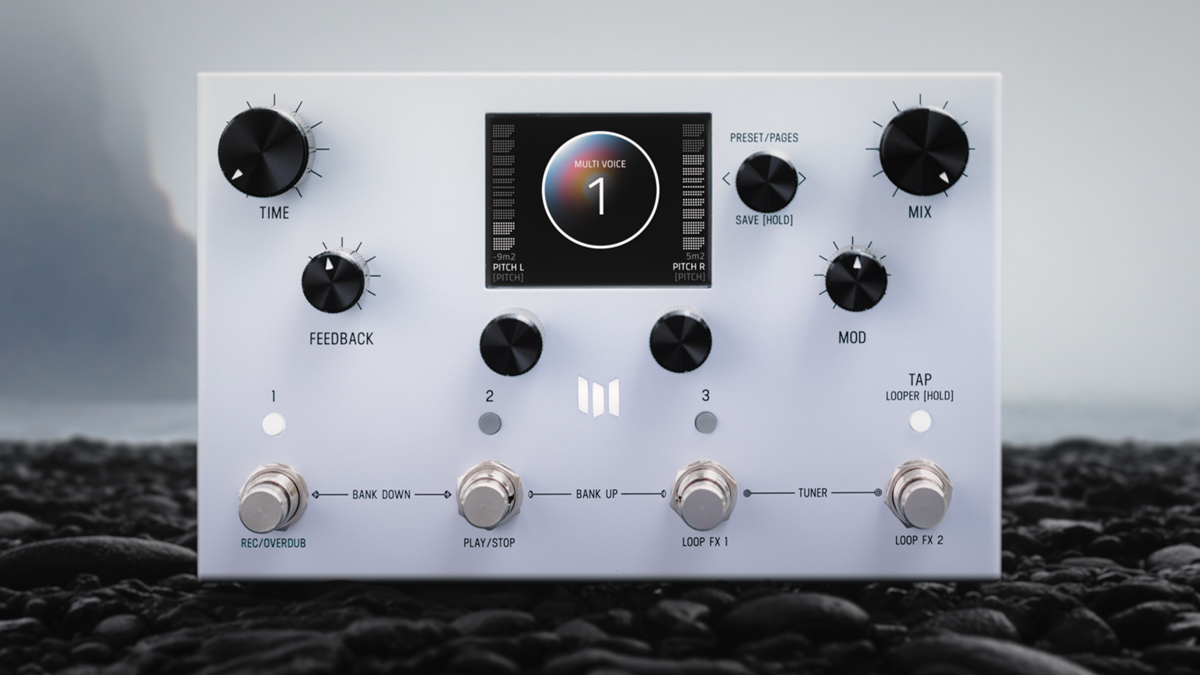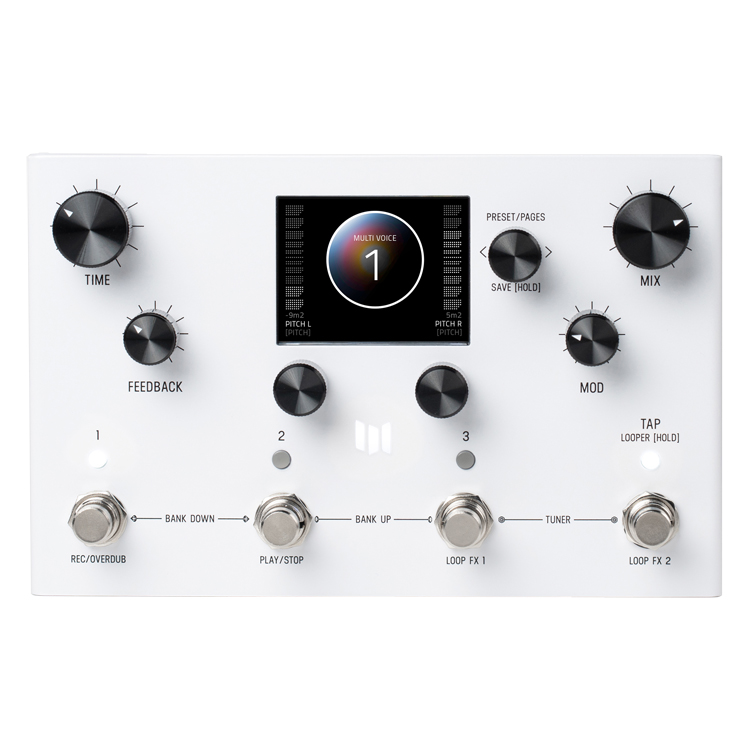
Boutique effects pedal specialist Meris has unveiled the LVX Modular Delay System – a super-powerful new delay pedal that the company dubs its “greatest feat”.
It looks as though the shockwaves from Meris’ latest drop will be felt throughout the entire delay pedal market. Not only is its user interface seemingly head and shoulders above its rivals, the LVX boasts a number of features other delays could only dream of – namely, effects engines lifted from Meris’ pitch shifter, bit-crusher and synthesizer pedals.
Designed over the course of two years and engineered totally from the ground up, the LVX intends to “break the paradigm of pre-set delay types” by promising a more flexible, freeing approach to operation.
From a top-down perspective, the futuristic pedal features an intuitive new UI layout – headed up by an onboard screen that provides five separate pages for in-depth tonal control – and comes loaded with an impressive series of configurable delay types, structures and elements.
Examples of processing elements include Granulize, Cassette, Poly Pitch and Preamps, with the LVX also granting users access to 99 preset locations in 33 banks. Other notable appointments include selectable note divisions for each side of the stereo dual delay when used, as well as a range of Modifiers that further color the tone.
Modifiers include two LFO groups – featuring Ramp Up, Ramp Down and Triangle – as well as Envelope Generator, Sample and Hold, and Sequencer tools.
But wait, there’s even more: the LVX also comes loaded with the effects engines found in a number of Meris pedals, including the Polymoon delay, Hedras pitch shifter, Enzo synthesizer and Ottobit Jr. bit crusher. Pretty sensational stuff.
Get The Pick Newsletter
All the latest guitar news, interviews, lessons, reviews, deals and more, direct to your inbox!
For the controls, the LVX sports four footswitches and seven control knobs. Each of the footswitches have dual functionality, and are in charge of both engaging and bypassing a given preset, as well as operating the always-accessible Looper function. A tuner is also accessible through the first footswitch.


The engage/bypass function is also accessible via four LED buttons, which have been optimized for desktop/laptop users. The fourth LED also doubles as a Tap tempo button that lets users set the delay time on the fly.
Elsewhere, the two larger knobs in each corner of the LVX control familiar Time and Mix parameters, while a Preset/Pages knob – which also engages Edit mode when pressed – is used to scroll through presets and browse through preset tweaks.
More conventional knobs include Feedback and Mod, which, unsurprisingly, set the feedback and modulation level for the selected delay type. The control set is completed by two assignable controllers that can be used to adjust a pair of favored, selected parameters, which are visualized on the screen.
In terms of connectivity, the LVX has Mono and Stereo inputs and outputs, as well as an expression pedal jack, USB-C port and five-pin Din MIDI input and outputs.
It also boasts a premium analog signal path, thanks to the 24-bit AD/DA with 32-bit floating point DSP, JFET input section and advanced ARM processor, and offers up 2540ms of dual delay.
Based on its formidable feature set and ease of use, we daresay Meris’s latest creation will have the likes of the Boss DD-500, Strymon TimeLine and AmpliTube X-Time quaking in their boots – the LVX might just re-angle the trajectory of future delay design.
The Meris LVX is available to preorder now for $599, and will ship later this year.
For more information, visit Meris.

Matt is the GuitarWorld.com News Editor. He has a Masters in the guitar, a degree in history, and has spent the last 16 years playing everything from blues and jazz to indie and pop. When he’s not combining his passion for writing and music during his day job, Matt records for a number of UK-based bands and songwriters as a session musician.
“Jimi was staying at a hotel in Times Square. He had his hair set in pink curlers and we would just talk band drama”: Electro-Harmonix founder Mike Matthews on befriending Hendrix, booking Chuck Berry and the birth of pedal culture
“Our answer to everything players have asked for and more”: Neural DSP’s Nano Cortex had one major drawback – but now it’s been addressed with a huge free firmware update that takes on Kemper and TONEX










